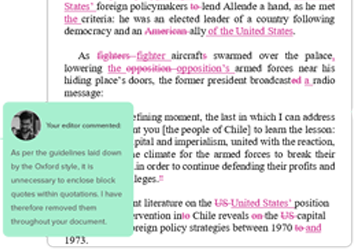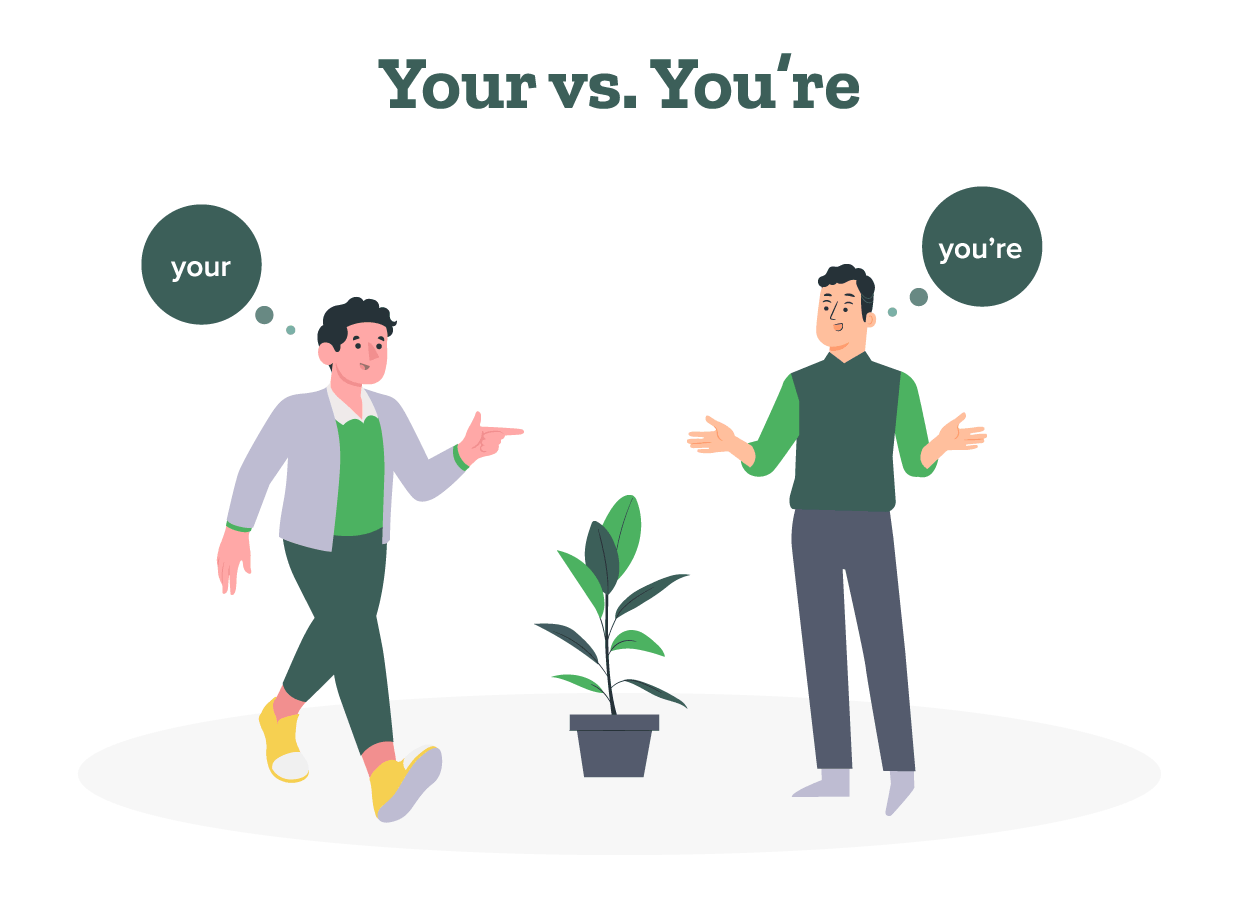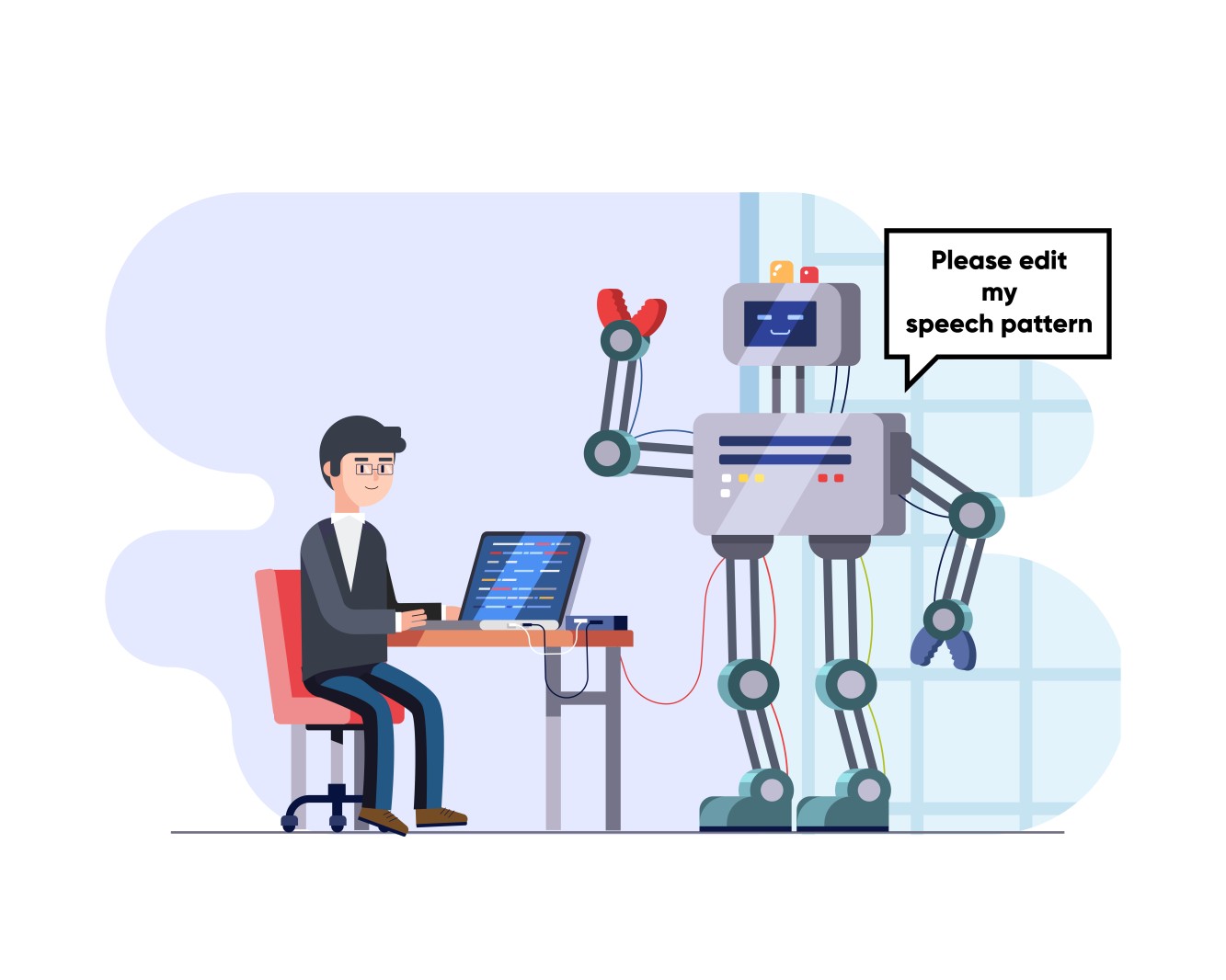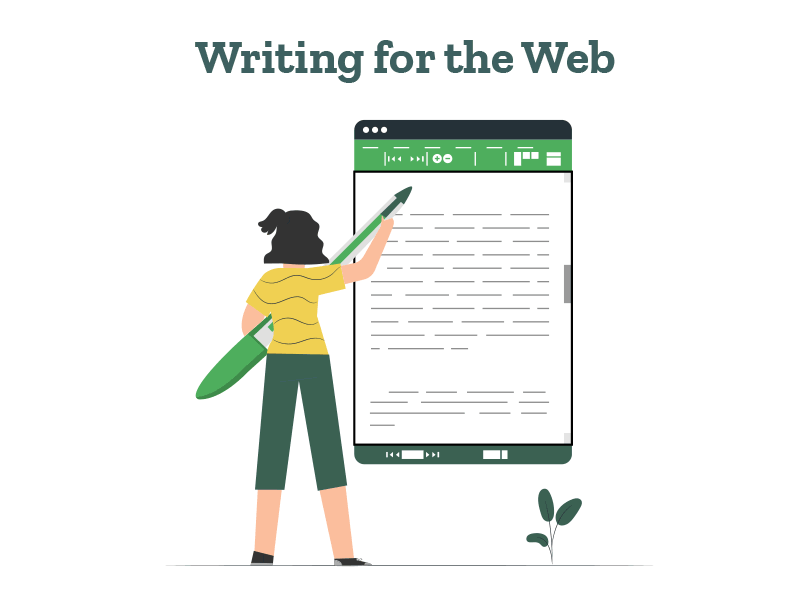- Tips to Self-Edit Your Dissertation
- Guide to Essay Editing: Methods, Tips, & Examples
- Journal Article Proofreading: Process, Cost, & Checklist
- The A–Z of Dissertation Editing: Standard Rates & Involved Steps
- Research Paper Editing | Guide to a Perfect Research Paper
- Dissertation Proofreading | Definition & Standard Rates
- Thesis Proofreading | Definition, Importance & Standard Pricing
- Research Paper Proofreading | Definition & Standard Rates
- Essay Proofreading | Options, Cost & Checklist
- Top 10 Paper Editing Services of 2024 (Costs & Features)
- Top 10 Essay Checkers in 2024 (Free & Paid)
- Top 10 AI Proofreaders to Perfect Your Writing in 2024
- Top 10 English Correctors to Perfect Your Text in 2024
- 10 Advanced AI Text Editors to Transform Writing in 2024
- Personal Statement Editing Services: Craft a Winning Essay
- Top 10 Academic Proofreading Services & How They Help
- College Essay Review: A Step-by-Step Guide (With Examples)
- Top 10 College Essay Review Services: Pricing and Benefits
- How to Edit a College Admission Essay (8-Step Guide)
- Improve Academic Writing: Types, Tips, Examples, Services
- How to Use AI to Write Research Papers: A Step-by-Step Guide
- How to Write an Assignment: A Step-by-Step Guide for Students
- AI Proofreading Services: Meaning, Benefits & Best Tools
- 10 Best Proofreading Services Online for All in 2025
- Top 10 Recommendation Letter Editing Services | Best Picks
- How to Format an Appendix: APA and MLA
- Top 10 Online Thesis Editing and Proofreading Services
- What is Academic Editing? Meaning, Types & Importance
- Research Paper Outline: Free Templates & Examples to Guide You
- How to Write a Research Paper: A Step-by-Step Guide
- How to Write a Lab Report: Examples from Academic Editors
- Research Methodology Guide: Writing Tips, Types, & Examples
- The 10 Best Essential Resources for Academic Research
- 100+ Useful ChatGPT Prompts for Thesis Writing in 2024
- Best ChatGPT Prompts for Academic Writing (100+ Prompts!)
- Sampling Methods Guide: Types, Strategies, and Examples
- Independent vs. Dependent Variables | Meaning & Examples
- Understanding Verbatim Plagiarism: Copy, Paste, Regret
- What Is a Journal Article and How to Write a Journal Article
- How to Use AI to Write Research Papers: A Step-by-Step Guide
- Top 10 AI Tools for Research in 2025 (Fast & Efficient!)
- What Is a Research Proposal: A Detailed Guide
- How to Format an Appendix: APA and MLA
- What Is an Appendix In a Paper?
- Types of Journals in Research and Their Features
- Difference Between Paper Editing and Peer Review
- How to Handle Journal Rejection: Essential Tips
- Editing and Proofreading Academic Papers: A Short Guide
- How to Carry Out Secondary Research
- The Results Section of a Dissertation
- Final Checklist: Is My Article Ready for Submitting to Journals?
- Types of Research Articles to Boost Your Research Profile
- How does LaTeX based proofreading work?
- How to Improve Your Scientific Writing: A Short Guide
- Chicago Title, Cover Page & Body | Paper Format Guidelines
- How to Write a Thesis Statement: Examples & Tips
- Chicago Style Citation: Quick Guide & Examples
- Research Paper Outline: Free Templates & Examples to Guide You
- The A-Z Of Publishing Your Article in A Journal
- What is Journal Article Editing? 3 Reasons You Need It
- How to Cite a Book in APA Style | Format & Examples
- How to Start a Research Paper | Step-by-step Guide
- APA Citations Made Easy with Our Concise Guide for 2024
- A Step-by-Step Guide to APA Formatting Style (7th Edition)
- Academic Writing in 2024: 5 Key Dos & Don’ts + Examples
- How to Write a Lab Report: Examples from Academic Editors
- What Are the Standard Book Sizes for Publishing Your Book?
- MLA Works Cited Page: Quick Tips & Examples
- 2024’s Top 10 Thesis Statement Generators (Free Included!)
- Top 10 Title Page Generators for Students in 2024
- What Is an Open Access Journal? 10 Myths Busted!
- Primary vs. Secondary Sources: Definition, Types & Examples
- How To Write a College Admissions Essay That Stands Out
- APA Journal Citation: 7 Types, In-Text Rules, & Examples
- What Is Predatory Publishing and How to Avoid It!
- Independent vs. Dependent Variables | Meaning & Examples
- How to Write a Strong Dissertation & Thesis Introduction
- How to Cite a Book in MLA Format (9th Edition)
- How to Cite a Website in MLA Format | 9th Edition Rules
- 10 Best AI Conclusion Generators (Features & Pricing)
- Top 10 Academic Editing Services of 2024 [with Pricing]
- 100+ Writing Prompts for College Students (10+ Categories!)
- How to Create the Perfect Thesis Title Page in 2024
- What Is Accidental Plagiarism & 9 Prevention Strategies
- What Is Self-Plagiarism? (+ 7 Prevention Strategies!)
- Understanding Verbatim Plagiarism: Copy, Paste, Regret
- Improve Academic Writing: Types, Tips, Examples, Services
- What Is a Journal Article and How to Write a Journal Article
- What Is Paraphrasing Plagiarism and How to Avoid It
- What Is Expository Writing? Types, Examples, & 10 Tips
- Academic Research Ethics & Rules Simplified for All
- Complete Guide to MLA 9th Format
- Top 10 Online Dissertation Editing Services of 2025
- What Is Plagiarism? Meaning, Types & Examples
- How to Write a Dissertation & Thesis Conclusion (+ Examples)
- What Is a Peer Review & 8 Types of Peer Review Processes
- 50 Best Essay Prompts for College Students in 2025
- What Is an Annotated Bibliography & Writing One Using AI
- What Is an Appendix In a Paper?
- Types of Journals in Research and Their Features
- 5 Effective Personal Statement Examples & Templates
- Preventing Plagiarism in Your Thesis: Tips & Best Practices
- Final Submission Checklist | Dissertation & Thesis
- 7 Useful MS Word Formatting Tips for Dissertation Writing
- How to Write a MEAL Paragraph: Writing Plan Explained in Detail
- How does LaTeX based proofreading work?
- Em Dash vs. En Dash vs. Hyphen: When to Use Which
- 2024’s Top 10 Self-Help Books for Better Living
- Top 10 Paper Editing Services of 2024 (Costs & Features)
- Top 10 AI Proofreaders to Perfect Your Writing in 2024
- 100+ Useful ChatGPT Prompts for Thesis Writing in 2024
- Best ChatGPT Prompts for Academic Writing (100+ Prompts!)
- MLA Works Cited Page: Quick Tips & Examples
- 2024’s Top 10 Thesis Statement Generators (Free Included!)
- Top 10 Title Page Generators for Students in 2024
- 10 Advanced AI Text Editors to Transform Writing in 2024
- Top 10 Academic Editing Services of 2024 [with Pricing]
- Know Everything About How to Make an Audiobook
- How to Create the Perfect Thesis Title Page in 2024
- Top 10 Academic Proofreading Services & How They Help
- Mastering Metaphors: Definition, Types, and Examples
- 10 Best Paid & Free Citation Generators (Features & Costs)
- What Is Plagiarism? Meaning, Types & Examples
- The 10 Best Free Character and Word Counters of 2025
- What Is an Annotated Bibliography & Writing One Using AI
- Citing References: APA, MLA, and Chicago
- How to Cite Sources in the MLA Format
- MLA Citation Examples: Cite Essays, Websites, Movies & More
- Chicago Title, Cover Page & Body | Paper Format Guidelines
- Chicago Style Citation: Quick Guide & Examples
- Citations and References: What Are They and Why They Matter
- APA Headings & Subheadings | Formatting Guidelines & Examples
- Formatting an APA Reference Page | Template & Examples
- How to Create an MLA Title Page | Format, Steps, & Examples
- How to Create an MLA Header | Format Guidelines & Examples
- MLA Annotated Bibliography | Guidelines and Examples
- APA Website Citation (7th Edition) Guide | Format & Examples
- APA Citations Made Easy with Our Concise Guide for 2024
- APA Citation Examples: The Bible, TED Talk, PPT & More
- APA Header Format: 5 Steps & Running Head Examples
- A Step-by-Step Guide to APA Formatting Style (7th Edition)
- How to Write an Abstract in MLA Format: Tips & Examples
- APA Journal Citation: 7 Types, In-Text Rules, & Examples
- 10 Best Free Plagiarism Checkers | Accurate & Reliable Tools
- How to Cite a Book in MLA Format (9th Edition)
- How to Cite a Website in MLA Format | 9th Edition Rules
- 10 Best Paid & Free Citation Generators (Features & Costs)
- Complete Guide to MLA 9th Format
- Research Paper Format: APA, MLA, & Chicago Style
- 5 Reasons Why It Is Important To Cite Your Sources
- APA Title Page Format Simplified | Examples + Free Template
- Writing a Dissertation Proposal
- The Acknowledgments Section of a Dissertation
- The Table of Contents Page of a Dissertation
- The Introduction Chapter of a Dissertation
- Tips to Self-Edit Your Dissertation
- The Results Section of a Dissertation
- Preventing Plagiarism in Your Thesis: Tips & Best Practices
- Final Submission Checklist | Dissertation & Thesis
- The Only Dissertation Toolkit You’ll Ever Need!
- 7 Useful MS Word Formatting Tips for Dissertation Writing
- 5 Thesis Writing Tips for Master Procrastinators
- The 5 Things to Look for in a Dissertation Editing Service
- Top 10 Dissertation Editing & Proofreading Services
- Why is it important to add references to your thesis?
- Thesis Editing | Definition, Scope & Standard Rates
- Expert Formatting Tips on MS Word for Dissertations
- A 7-Step Guide on How to Choose a Dissertation Topic
- 350 Best Dissertation Topic Ideas for All Streams in 2024
- A Guide on How to Write an Abstract for a Research Paper
- Dissertation Defense: What to Expect and How to Prepare
- Creating a Dissertation Title Page (Examples & Templates)
- Top 10 Online Dissertation Editing Services of 2025
- A Beginner’s Guide to How to Write a Dissertation in 2025
- What Is a Research Proposal: A Detailed Guide
- How to Write a Dissertation Literature Review: Tips and Structure
- Essential Research Tips for Essay Writing
- How to Write a MEAL Paragraph: Writing Plan Explained in Detail
- How to Write a Thesis Statement: Examples & Tips
- What Is a Mind Map? Free Mind Map Templates & Examples
- How to Write an Essay Outline: Free Template & Examples
- How to Write an Essay Header: MLA and APA Essay Headers
- How to Write an Essay: 8 Simple Steps with Examples
- Expository Essay: Structure, Tips, and Examples
- Guide to Essay Editing: Methods, Tips, & Examples
- Narrative Essays: Structure, Tips, and Examples
- How to Write an Argumentative Essay (Examples Included)
- How to Write a Conclusion for an Essay (Examples Included!)
- How to Write an Impactful Personal Statement (Examples Included)
- Literary Analysis Essay: 5 Steps to a Perfect Assignment
- How to Write a Compare and Contrast Essay: Tips & Examples
- Top 10 Essay Checkers in 2024 (Free & Paid)
- 100 Best College Essay Topics & How to Pick the Perfect One!
- College Essay Format: Tips, Examples, and Free Template
- 10 Best AI Essay Outline Generators of 2024
- The Best Essay Graders of 2024 That You Can Use for Free!
- Personal Statement Editing Services: Craft a Winning Essay
- College Essay Review: A Step-by-Step Guide (With Examples)
- Top 10 Essay Editing Services of 2024
- Top 10 College Essay Review Services: Pricing and Benefits
- How to Write an Assignment: A Step-by-Step Guide for Students
- The Four Main Types of Essay | Quick Summary with Examples
- How to Write an Essay Introduction | 4 Examples & Steps
- Top 10 Free Essay Writing Tools for Students in 2025
- 10 Best AI Essay Writing Tools in 2025
- What Is an Essay? A Comprehensive Guide to Structure and Types
- How to Write a Descriptive Essay | Examples and Structure
- Structure of an Essay: 5 Tips to Write an Outstanding Essay
- Types of Introductions and Examples
Still have questions? Leave a comment

Checklist: Dissertation Proposal
Enter your email id to get the downloadable right in your inbox!

Examples: Edited Papers
Enter your email id to get the downloadable right in your inbox!
Need
Editing and
Proofreading Services?

The Four Main Types of Essay | Quick Summary with Examples
 Apr 07, 2025
Apr 07, 2025 7
min read
7
min read
- Tags: Academic Writing, Essay, Essay Writing
An essay is a highly versatile, non-fictional piece of writing aimed at persuading, informing, or entertaining the reader. It can serve multiple functions, such as taking a stance on topics, disproving widely believed myths, and sharing interesting anecdotes.
There are various styles and types of essay writing that can be used to serve specific functions. In this article, we’ll take a detailed look at the four main types of essays, along with the combinations and derivations of these types. Let us understand what are the different types of essays.
What are the four main types of essays?
There are four types of essays you can write depending on the message you want to convey. They include narrative essays, descriptive essays, argumentative essays, and expository essays.
Narrative and descriptive essays aim to tell a story or describe an immersive experience with the help of sensory descriptors. Expository and argumentative essays aim to educate and inform the reader on a particular topic.
There are many more types of essay that are a combination or derivation of these four essay types. Here are the four main types of essays. To help you better understand these essay types, we’ve also constructed relevant example essays.
1. Narrative essay
A narrative essay is a type of writing that involves telling a story using either highly specific or open-ended prompts. It is a form of personal and creative nonfiction that tests your ability to build up your story in a well-structured format. The use of storytelling techniques such as similes, metaphors, alliteration, imagery, and dialogue is common in narrative essay writing.
It typically begins with the introduction of the settings and characters of the story. The body consists of the highlights of your life, often described with the help of vivid imagery. The conclusion includes reflections on the meaning or significance of the events, as well as any lessons learned or insights gained from experience.
A personal statement is one example of a narrative essay, where you tell a story about yourself in order to convince the reader of your suitability for a particular role or position.
Let’s understand the structure of a narrative essay better with the help of this example:
My First Job as a Server
My first job as a server was a crash course in hard work, patience, and resilience. I was eager to work and earn my own money, but I had no idea what I had signed up for.
I soon discovered that this job was no walk in the park. I had to constantly be on my feet, multitasking and juggling multiple orders at once. But with the help of my manager and fellow servers, I was quickly able to learn the ropes.
One of the biggest challenges I faced was being patient with irate customers. Initially, their harsh words made me doubt my abilities. But, over time I developed a thick skin and became immune to their comments.
These experiences taught me to be patient with myself as well as with others. I developed a sense of empathy, that I never would have otherwise and learned not to take things personally. Due to the fast-paced restaurant environment, I also learned how to multitask and manage my time efficiently.
Looking back, I can confidently say that these experiences shaped me into the person I am today. These lessons have stayed with me throughout and continue to influence the way I approach challenges.
2. Descriptive essay
A descriptive essay aims to provide an immersive experience for the reader by using sensory descriptors. Unlike a narrative essay, which tells a story, a descriptive essay has a narrower scope and focuses on one particular subject or aspect of a story.
For example, a descriptive essay about a beach may describe the warmth of the sand underfoot, the sound of the waves crashing against the shore, the salty smell of the ocean breeze, and the taste of saltwater on the lips. These sensory details bring the reader into the experience and allow them to imagine themselves in the setting.
One key tip for a descriptive essay is to choose your words carefully, using language that is both specific and evocative. By doing so, you can create a strong emotional connection between the reader and the subject of the essay. The goal is to make the readers feel as though they are a part of the setting, experiencing it firsthand. You can always take the help of AI essay writers to get a blueprint for your essay.
Let’s understand this in more detail with the help of an example:
Cherry Blossoms in Japan
Japan’s cherry blossom season is a magical time of year when the country is covered in a sea of pink and white petals. The colors are striking and seem to change with the light and angle of the sun.
The soft, delicate petals dance in the wind, filling the air with a sweet fragrance that can be smelled everywhere. The sound of the petals rustling and swaying in the breeze is soothing and calming.
Families and friends gather beneath the trees, enjoying picnics and drinks, adding to the festive atmosphere. The taste of the cherry blossom is subtle but distinct, and many Japanese sweets and drinks are flavored with sakura.
The essence of the cherry blossom is hope and renewal, reminding us of the fleeting nature of life and the importance of savoring each moment. It is a time when the entire country comes together to celebrate life’s beauty and the present moment.
Witnessing the cherry blossom in Japan is a sensory feast that evokes feelings of joy, wonder, and gratitude. It is an unforgettable experience that should not be missed.
3. Argumentative essays
An argumentative essay is an extended argument that aims to persuade the reader to adopt a particular stance based on factual information and statistics. It is one of the most common forms of college essays.
The purpose of an argumentative essay is to present a well-reasoned and well-supported argument in favor of a particular position. You must provide relevant evidence, logical reasoning, and convincing arguments to support your stance. The goal is to convince the reader to accept your point of view.
To write an effective argumentative essay, you must conduct thorough research. This involves gathering reliable sources of information, analyzing it, and synthesizing it into a coherent argument. You should also consider counterarguments and address them in your essay to strengthen your position.
Let’s take a look at an example:
The Power of Positive Reinforcement
Positive reinforcement is a powerful tool for motivating individuals and increasing performance efficiency. It involves rewarding desired behavior, rather than punishing negative behavior. Research has shown that positive reinforcement can be highly effective in both school and workplace settings.
In a study conducted by the University of Melbourne, researchers found that students who received positive feedback from their teachers were more likely to be engaged and motivated. They were also more likely to participate in class and have better academic performance.
Similarly, in a corporate setting, positive reinforcement has been shown to improve employee morale and job satisfaction. A study by the Society for Human Resource Management found that 89% showed high levels of motivation when their achievements were recognized and appreciated. Additionally, 86% of employees showed increased job satisfaction.
Positive feedback, also helps individuals think creatively and develop strong problem-solving skills. A study conducted by the University of Illinois involved participants engaging in a brainstorming task, where some were provided with positive feedback and others were not. The results showed that those who received positive feedback demonstrated significantly greater creativity and better problem-solving abilities than those who did not.
Positive reinforcement is proven to be powerful tool that should be implemented in both academic and corporate settings. It not only improves academic and workplace achievements but also promotes creativity and problem-solving skills.
4. Expository essays
An expository essay is a common format used in school and college exams to assess your understanding of a specific topic. The purpose of an expository essay is to present and explore a topic thoroughly without taking any particular stance or expressing personal opinions.
An expository essay does not require an original argument and requires less research as compared to an argumentative essay. However, you should be able to cover a topic from all angles and provide factual information to support your argument. You should also be able to structure your essay in a well-organized, logical format, with a clear introduction, body, and conclusion.
The term “expository essay” is an umbrella term used to describe several different types of essays. They include classification essays, definition essays, compare and contrast essays, and cause and effect essays.
Let’s take a look at an example:
The Legacy of Thomas Edison
Thomas Edison was one of the most important inventors in history, credited with over 1,000 patents during his lifetime. He was born in Ohio in 1847 and grew up in Michigan, where he received very little formal education. Despite this, Edison showed a strong interest in science and technology from an early age and began conducting experiments in his spare time.
In his early career, Edison worked as a telegraph operator and began to develop his own inventions, including an improved stock ticker and a quadruplex telegraph system. In 1877, he invented the phonograph, a device that could record and play back sound. This invention helped establish Edison as a leading inventor and made him a household name.
One of Edison’s most famous inventions was the incandescent light bulb, which he developed in the late 1870s. This invention revolutionized the way people lived, allowing them to work and live comfortably even after sunset. Edison’s work on the light bulb led to the development of the electrical power grid, which helped bring electricity to homes and businesses across the country.
Throughout his career, Edison remained committed to the idea of practical invention, focusing on creating devices that would have a real impact on people’s lives. He famously said, “Anything that won’t sell, I don’t want to invent. Its sale is proof of utility, and utility is success.”
Overall, Thomas Edison’s impact on the world of invention and innovation cannot be overstated. His inventions helped transform the world and set the stage for many of the technological advances that we enjoy today.
Other types of essays
Now that we’ve looked at the four main types of essays, let’s take a look at the combinations and derivations of these types.
These different types of essays include:
1. Persuasive essays
These types of essays aim to convince the reader to adopt a particular viewpoint. They achieve this by using personal anecdotes and experiences, which are backed up by factual evidence. Although they share some similarities with argumentative essays, persuasive essays place greater emphasis on emotion and personal narratives, on top of providing factual evidence.
Persuasive essays follow three methods of persuasion: Ethos, pathos, and logos. These methods are utilized to effectively convince the reader to adopt a particular viewpoint.
- Ethos involves establishing the writer’s strong moral character, creating a sense of trustworthiness and reliability with the reader.
- Pathos aims to evoke an emotional response from the reader in order to sway them toward the writer’s viewpoint.
- Logos relies on providing the reader with hard facts, statistics, and evidence to convince them to adopt the writer’s standpoint.
Here’s an example:
Importance of Mental Health Days in Corporate Settings
Employees need mental health days for their overall wellbeing and productivity. According to the World Health Organization, one in four people globally are affected by mental health disorders, which can lead to absenteeism, presenteeism, and decreased productivity in the workplace.
Taking a mental health day can provide a necessary break from work-related stress and allow employees to focus on their mental well-being. It can help prevent burnout and reduce the risk of developing serious issues such as depression or anxiety. Employees who feel supported in taking mental health days are more likely to return to work feeling refreshed and recharged, leading to increased productivity and creativity.
Furthermore, promoting mental health days in the workplace can foster a culture of transparency and support. When employees feel comfortable discussing their concerns with their employers and colleagues, it creates a sense of trust and understanding. This can lead to a more positive work environment and a higher level of employee morale.
In conclusion, mental health days are not a luxury, but a necessity for maintaining employees’ mental health and wellbeing. Employers who recognize the importance of mental health days and actively promote them in the workplace can create a more productive, positive, and healthy work environment for their employees.
2. Critical essays
A critical essay is not necessarily an evaluative piece of writing, but rather a thoughtful and analytical approach to interpreting a work of art. Through this process, you can provide valuable insights that enhance the reader’s appreciation and understanding of a piece.
These types of essays are common projects assigned to students in school or college. They involve the analysis and interpretation of a text or a visual medium. It goes beyond criticism despite the negative connotation of the term “critical”. It analyzes themes, characters, plots, and other crucial aspects to gain a deeper insight into the message or purpose of a literary or visual piece.
The critical essay-writing process involves actively reading or observing a piece of art or literature and forming a central idea or thesis statement on the basis of these observations. The body paragraphs consist of topic sentences that bolster the thesis statement, along with pieces of evidence proving these statements. The conclusion consists of the summary of the most impactful parts of your essay along with a powerful concluding statement.
While writing a critical essay or literary analysis essay, it is crucial to inspect every little aspect of a piece. For example, when writing a critical essay on a poem, it is essential to analyze its structure, the specific use of language, and the various literary devices used by the poet. By examining these elements, you can effectively explain its intended message.
Take a look at an example:
The Surreal Narrative of Virginia Woolf’s A Haunted House
Virginia Woolf’s A Haunted House is a surreal narrative that explores the interplay of light and shadow, the instability of time, and the haunting silence of an old house. The narrator’s state of mind is between sleep and wakefulness, which is reflected in the hazy lighting of the setting. The events of the night are narrated in the present tense, while the narrator’s waking hours are narrated in the past tense, heightening the sense of eeriness. The story takes place inside the narrator’s mind, bearing an imprint of their unconscious.
The provocation that “nothing really happens in A Haunted House” is inappropriate because it assumes there is one absolute reality in which events naturally unfold. In Woolf’s essay Modern Fiction, she reflects on the essential thing one looks for in fiction, which is often lost due to stagnant literary conventions like plot. Woolf rejects the realistic mode of storytelling to find a better form for the essential thing, which she creates out of the consciousness of her narrator.
One may argue that the narrator’s consciousness imagines the disembodied selves of old writers as the ghostly couple and gives form to “the light in the heart” when the ghosts bury it inside the house. The act of giving form to “the light in the heart” connects the new writer to the ghostly selves of old writers. These are the things that happen in the story.
In conclusion, the surreal narrative of A Haunted House is an exploration of the interplay of light and shadow, the instability of time, and the haunting silence of an old house. Through her rejection of stagnant literary conventions and the creation of a new reality shaped by the consciousness of her narrator, Woolf gives form to “the essential thing” in fiction.
3. Reflective essays
These essays provide an opportunity for you to share your personal insights, opinions, and reflections on an experience. They are highly creative and typically employ the first-person point of view.
Through this form of writing, you can take the time to reflect on the meaning and significance of certain life events and their impact on you. It also allows you to share your key takeaways or lessons you’ve learned from these events.
Here’s an example:
A Trip to My Home Country
My trip to Kenya, my home country, was an eye-opening experience that left a lasting impact on me. As a Kenyan-American, I had grown up hearing stories about my parents’ home country, but nothing prepared me for the reality of it. The vibrant colors, the delicious smells, and the welcoming people all contributed to a truly inspiring trip.
One of the most memorable moments was visiting a rural village and meeting a group of young girls who were determined to receive an education. Despite facing significant obstacles, such as the societal pressure to prioritize marriage over education, these girls were highly committed to their goals. It was truly inspiring to see their resilience and made me reflect on my own privileges and opportunities in life.
The trip also made me realize the importance of preserving one’s cultural heritage. As a Kenyan American who was born and raised in the United States, I had never fully appreciated the richness and diversity of Kenyan culture. However, being immersed in it made me realize the importance of keeping these traditions alive.
Overall, my trip to Kenya inspired me to be more appreciative of my cultural heritage, to work towards social justice and equality, and to never take my privileges for granted. It was a truly life-changing experience that will stay with me forever.
The next step to creating a perfect essay is thorough editing. You can either choose to edit it yourself or make things easier for yourself by consulting a professional essay editing service. Which you all the best in your essay-writing journey!
Keep reading with more resources from your loyal editors and proofreaders:






